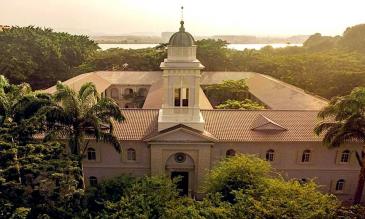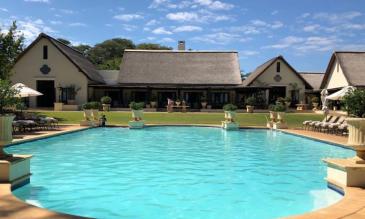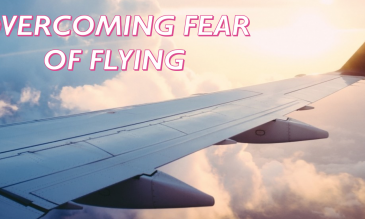- Icelandair traces its roots to two airlines that were founded in the late 1930s and the middle of the 1940s. Today, Icelandair, headquartered at Reykjavik Airport, is the main airline of Iceland and offers flights to and from Iceland, as well as an attractive option for cross-Atlantic flights. Through Iceland as a hub, Icelandair connects 26 cities in Europe with 16 cities in North America.
- In 1937, Flugfelag Akureyrar was founded in Akureyri on the north coast of Iceland. In 1944, three young Icelandic pilots founded Loftleidir, later also known as Icelandic Airlines. Icelandair is the airline that resulted from the merger of the two companies.
- In 1938, flight operations started with a single floatplane of the type Waco YKS-7, but the airline had to be grounded in 1939 when the aircraft was destroyed in an accident. In 1940, Flugfelag Akureyrar moved its headquarters to Reykjavik, acquired another Waco aircraft, and was re-launched as Flugfelag Islands (Flight Company of Iceland).
- In the first half of the 1940s, both companies concentrated on Icelandic domestic flights. Flugfelag Islands fleet was expanded with a Beechcraft Model 18, in 1942, and two de Havilland Dragon Rapide, as well as one Consolidated PBY Catalina, in 1944.
- In July 1945, Flugfelag Islands made its first international commercial flight over the Atlantic Ocean, from Reykjavik to Prestwick Airport, Scotland. With B-24 Liberator aircraft leased from Scottish Airlines, regular flights to Glasgow (Scotland) and Copenhagen (Denmark) were launched in 1946. In the 1950s, Flugfelag Islands began to use the Icelandair branding for international flights.
- In 1946, Flugfelag Islands purchased six Douglas DC-3 Dakota aircraft, thus improving comfort and performance of domestic flights in Iceland. The aircraft remained in service with the airline until 1972.
- In 1947, Loftleidir began international operations. Its pioneering low-fare services across the North Atlantic started in 1953, making it a popular airline for travel between Europe and North America. Loftleidir can even be considered, in a way, a precursor of the low-cost carriers that started operating in the 1970s.
- In 1952, the first merger proposal of the Icelandic government was rejected, which lead to the split of the domestic routes between the two airlines as a measure to ease competition. As a result, Loftleidir ceased domestic flights in Iceland entirely, focusing instead on international flights, and Flugfelag Islands became the main domestic carrier of the country.
- In 1967, Flugfelag Islands was the first Icelandic airline to join the jet age with a Boeing 727. Another Boeing 727 was acquired in 1971, and this type of aircraft was operated until 1990.
- In 1973, a new attempt to merge Flugfelag Islands and Loftleidir was successful. The two airlines merged in a new holding company, Flugleidir. Flugfelag’s fleet of Douglas DC-3s and Boeing 727s was enlarged by Douglas DC-8s of Loftleiðir. In 1979, Flugfelag Islands bought all of Loftleidir’s assets in Flugleidir, and the airline decided to use Icelandair as its international trade name and to retain the Flugleidir name only in the Icelandic domestic market.
- In 1987, an agreement to renew the international fleet of Icelandair was signed with Boeing. A new generation of Boeing jets, 737-400 and 757-200, replaced the older fleet gradually, from 1989 to 1993. The Boeing 737s were deployed on European routes, and the Boeing 757-200s became the backbone for transatlantic flights during the 1990s.
- In 1995, the European hub at Luxembourg-Findel Airport taken over from Loftleidir was dismantled in favor of today’s decentralized European network of non-stop flights linking Reykjavik to the largest cities.
- In 1997, Icelandair combined its domestic operations, part of which had previously been operated under the Flugfelag Nordurlands branding, with the small airline Nordurflug and founded a regional airline, Air Iceland. The founding of this subsidiary allowed Icelandair to fully concentrate on international flights.
- In 1999, Icelandair introduced a new aircraft livery, as part of an image campaign designed to retire Icelandair’s label as a “backpacker airline” in favor of an emphasis on business travel.
- Between 2002 and 2005, Flugleidir was reorganized as FL Group (for non-aviation finance and investment business) and Icelandair Group (for aviation business). Icelandair is the largest from the 11 subsidiaries of the holding in the travel and tourism industry in Iceland. In December 2006, Icelandair Group was listed on the Iceland Stock Exchange as ICEAIR.
- In May 2005, a Boeing 767 aircraft was added to the fleet, serving San Francisco, Icelandair’s first destination on the West Coast of the United States.
- In 2007, Icelandair Group purchased the majority of the stock in Travel Service a.s., a Czech airline that operates scheduled flights under the brand name SmartWings and charter flights, and also offers aircraft leasing services to other airlines. In 2013, Icelandair Group sold all its shares in the Czech airline.
- In 2010, Icelandair had to deal with a crisis when large parts of the European airspace were closed down following the eruptions of the Eyjafjallajokull volcano. Trying to operate as many passenger flights as possible, Icelandair kept its hub at Keflavik open and diverted European flights to airports that were still open. The eventual closure of Keflavik Airport due to the volcanic ash cloud coincided with an improvement of the situation towards Europe, allowing Icelandair to move its headquarters to Glasgow, from where the airline operated flights for ten days with shuttle flights to Akureyri Airport and bus shuttles onwards to Reykjavik.
- Between 2011 and 2013, Icelandair launched scheduled flights to Washington D.C., Denver, and Anchorage, bringing the total number of cities served in the US up to eight, along with New York City, Boston, Seattle, Orlando, and Minneapolis.
- In February 2013, Icelandair Group placed an order for sixteen new Boeing 737 MAX planes. The planes, seven 737 MAX 9 aircraft with 172 seats and nine 737 MAX 8 airplanes with 153 seats, will be delivered between 2018 and 2021.
- In 2014, Icelandair launched a new social media initiative #MyStopover in order to raise awareness about its unique offer: passengers traveling on transatlantic flights have the opportunity to make a stopover in Iceland for up to seven days, at no additional cost. In February 2015, as part of the #MyStopover campaign, Icelandair officially launched a Northern Lights themed Boeing 757, with the exterior depicting an Icelandic winter scene with beautiful Northern Lights. On board, an impressive installation of LED mood lighting emulates both the colors and dancing patterns of the aurora. The Hekla Aurora flies to all of the airline’s 40 destinations.
- In 2015, Icelandair launched year-round services from Chicago O’Hare International Airport and scheduled flights to and from Portland, Oregon on the West Coast of the US. Service to Montreal, Canada is announced to begin in May 2016.
- In 2016, Icelandair added two new destinations to the route network, Chicago and Montreal, and also resumed service to Paris Orly International Airport, in addition to flying to Charles de Gaulle Airport. A wide-body Boeing B767 jet was added to the fleet, and Icelandair became the first European airline to offer fleet-wide gate-to-gate Wi-Fi.
- In 2017, Icelandair celebrated 80 years of operations. Three new destinations, two in the US – Philadelphia and Tampa, and Berlin in Europe were added to the route network.
- In March 2018, Icelandair took delivery of three Boeing B737 MAX 8. The passenger cabin of the new aircraft features 160 seats, 16 in Saga Business Class in a 2-2 layout and 144 Economy Class in a 3-3 configuration.
-
In November 2018, Icelandair Group, Icelandair’s parent company, announced the acquisition of WOW air, subject to shareholder approval. The two airlines, Icelandair and its low-cost rival that operates services between Iceland, Europe, and North America, would continue to operate under separate brands, but together would have a share of around 3.8% of the transatlantic market.
- Throughout its history, Icelandair aircraft were involved in five fatal accidents. In the first accident and, to date, the worst aviation accident in Iceland, 25 people were killed when a Flugfelag Islands Douglas C-47 crashed during a scheduled domestic flight. The last fatal accident occurred in November 1978, when a Douglas DC-8 carrying 262 people on board missed the runway upon approaching the Colombo Airport in Sri Lanka and crashed; 183 people were killed in the crash of Flight LL001, a chartered Hajj pilgrimage flight from Jeddah, making it by far worst accident in the history of Icelandic aviation.

 En
En Es
Es Fr
Fr







